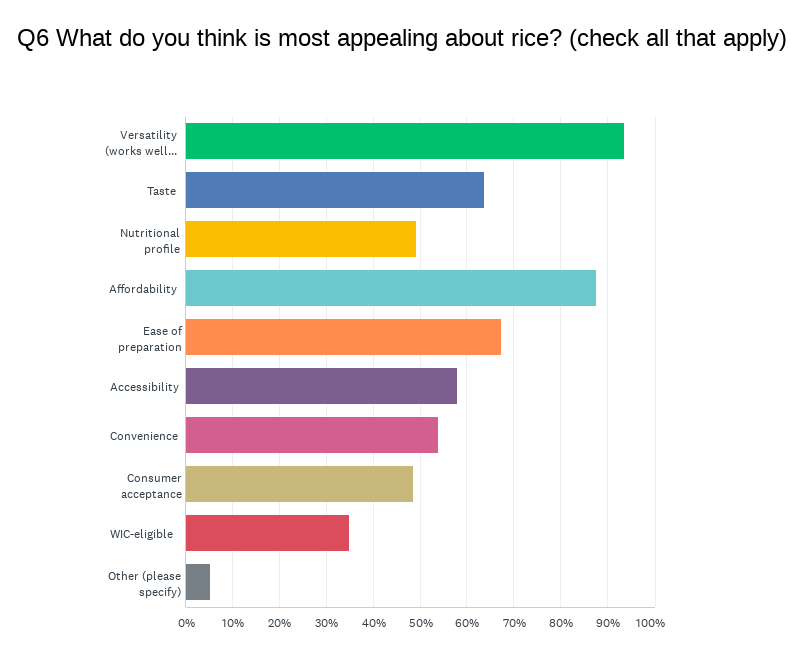 Can we choose "all of the above?"
Can we choose "all of the above?"
Oct 28, 2021
ARLINGTON, VA -- Last month, USA Rice hosted a virtual booth at the Academy of Nutrition and Dietetics’ 2021 Food & Nutrition Conference & Expo (FNCE) to engage directly with nutrition professionals and distribute USA Rice resources including domestic varietal information, nutrition handouts, rice research, sustainability materials, recipes, industry videos, and food safety facts.
Attendees could ask questions or video chat in real time with USA Rice staff and fill out a questionnaire on rice usage, applications, nutritional reputation, and the importance of product of origin claims. More than 550 registered dietitians, food policymakers, healthcare providers, nutrition scientists, and other food industry leaders participated in the digital USA Rice survey in which they were asked: “Do you use or recommend rice as part of a healthy diet?”; “What is the best use or application of rice?”; and, “Does using rice grown in the United States matter to you?”
“This survey yielded overwhelmingly positive results for U.S.-grown rice and provided some significant takeaways on rice across the nutrition landscape,” said Cameron Jacobs, USA Rice director of domestic promotion.
Almost all respondents use and recommend rice and rice products as part of a healthy diet because it’s a whole grain (84.74%), gluten-free (70.04%), and a complex carbohydrate (66.73%).
Nearly sixty percent (58.39%) of survey respondents indicated country of origin is important to them, citing a variety of reasons why “Grown in the USA” matters, including confidence in safety and quality, trust in growing standards, sourcing rice with lowest levels of heavy metals, sustainability factors, and the ability to support U.S. farmers and the domestic economy.
The top recommended variety by the nutrition professionals was whole grain brown rice at ninety two percent, with sixty-six percent specifically recommending whole grain aromatics. Whole grain rice was followed by wild rice (59.34%) and enriched white rice (37.91%) for the top three recommended varieties.
The top identified characteristics of rice were versatility (93.57%), affordability (87.68%), and ease of preparation (67.45%), while confusion on carbohydrates and a lack of understanding between white and brown rice were spotlighted as barriers to acceptance.
“Despite recent media coverage and misinformation on the safety of rice and rice products, only three percent of all respondents cited that concerns about arsenic would prevent them from recommending rice,” said Jacobs. “On the contrary, most respondents (60.4%) said nothing prevented them from recommending rice as part of a healthy diet, although they did indicate patients with diabetes or portion control issues were given specific guidance for rice consumption.”
Survey data has an impact on future USA Rice messaging and development of nutrition resources such as teaching materials, healthy recipes, social media posts, varietal information, and much more.